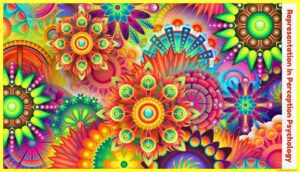Representation In Perception Psychology
Today we will be talking on the topic which is slightly philosophy, Representation In Perception Psychology, actually you know it should help you think about perception in a slightly broad way okay we are going to talk about the concept of representation in perception now I want you to think of perception and I want you to think of what really perception means if you actually put some thought to this.
This lecture focuses on mental representation and perceptual encoding. We will talk about whether mental representations are built via sensory experience or analytical processes. We will also touch upon the consequences of taking either approach towards representation and will try to see if is there any middle path.
What is perception?
Really involved now perception basically is looking you know is representing the information that is in the outside world to you know you are mind is it cognitive psychology is all about mind what we trying to do is to represent everything that his external to us to an internal world which is your mind says how do we do it with the help of various senses.
The visual be it audition be it through your nose which is all faction be through your tasteless which is or through you can tackle the information what is it that you are actually and basically doing in perception what you doing is you are representing the world outside to the world inside oaky that adjusts very quick concept about what representation is now representation in itself has a few. You know little bit few thoughts they have really being you know investigated what are to say more deeply in philosophy they have also concerned cognitive scientist and psychologist and people who study visual perception or order perception any kind of perception for that matter will try in today’s lecture to really you know going to feel have a feel of this problem. And maybe this will help you understand whatever is going to come later in the topic of perception it is kind of trying to you know to create a baseline for you to understand what perception is all about now representation basically can also be said to the currency of cognition.
Your mind cannot work about work on external information unless it is represented in the language that the mind understands what is the representation that could be the first step of this representation we have talking about this sense sometime now starting from psychophysics till the physiology class that this basic conversion process is what is called transduction is not it. What does this transduction actually do, how do you really make sense of information that is outside you know it is like imagining somebody who goes to a foreign country and you just carrying the currency of this home country.
Representation: The Currency of Cognition
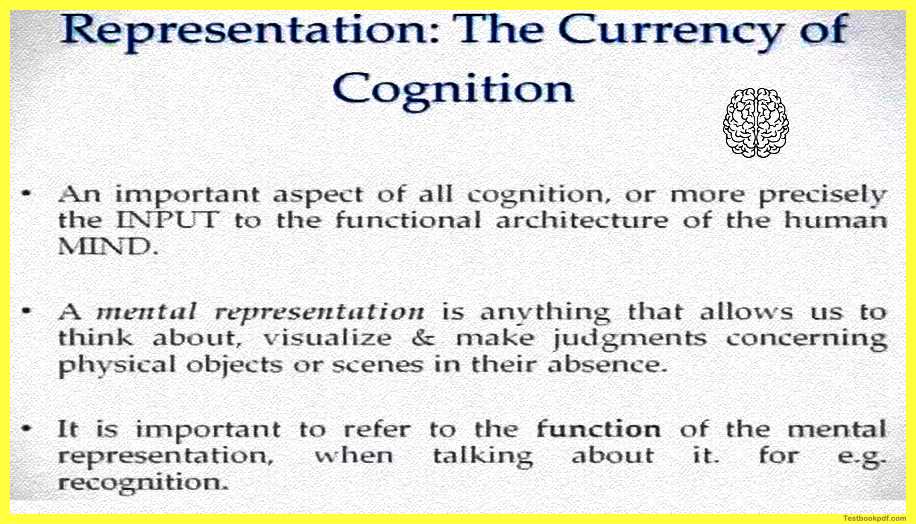
So if I example you know to travel to Europe but you only have rupees you know and you want to spend those rupees to buy goods that those rupees may accept will people you know let you accept use rupees to buy you know whatever eatables or you know the place to see or whatever. So this is basically where the problem of representation is about you need to convert the currency that is of the external world to the currency that is of the internal mine space and this process of conversion of currencies is what you know an important so this is basically what we have to talk about.
So an important concept of all cognition or more precisely this whole point of input to the functional architecture of the mind is representation. To try to define it technically a mental representation is anything that allows us to think visualize and make judgments concerning these physical objects or seems in their absence.
For example, in this you know at this moment while giving this lecture I want to think about my home okay, I only think about let us say my study days in my drawing room, how can I do it at this moment I do not have them right in front of me so I cannot really see them. But I do have what is called a representation of that in my head I have seen that once I have stored it in my memory.
How do I store something in my memory?
So it needs to be converted to a language to a file kind you know if you see for example you want to follow the computer metaphor the file needs to be converted to a type that my brain can store that is the problem of representation. So it is really important to, it is also important to effect to the function of this mental representation why do we create these mental representations as I said if I have to talk about my drawing room and my study table I have to have you know, I have to I am using that representation for something that mental representation is being used for me by me to talk about that, so the concept of this mental representation and why is this mental representation needed is also something which we need to understand. So one of the very basic concepts is said for example to recognize you know you have to have a mental representation of something that is in the external world to be able to recognize it what does recognition mean, recognition basically includes all the three processors namely identification you to know what this is categorization you know what category is one belongs to and you also need to be able to discriminate a particular stimulus from other guideless.
So I show you, assume mobile phone here you need to know that it is a mobile phone you should identify it to know it that it is you know a particular kind of communication device and you need to distinguish it from letting us say there is a Tiffin box next to it all of this processes combined to get recognition and they basically you know if to fall this particular problem of recognition.
One needs to principally rely on the encoding of spatial information which is derived through perception experiences so you need to know what color you shaped those kinds of things a special frequency is those different kinds of things and how you get that information from perception experience you processing that information using your eye and maybe folding it using data recognition can only be successful is mental representation.
Can be matched with current contains perception suppose I have novel object reminder you have never seen something like that you have no name for it whether you will be able to recognize it or not you do not have matching representation in your head so you will not be able to you know recognize this novel object so recognition is only possible if you already have some personal experience of whatever is outside obviously we will talk about that how people deal with all objects and later in time but for now if you really need to recognize something you need to have some experience in it earlier now one of the requirements of this process is that this should be flexible.
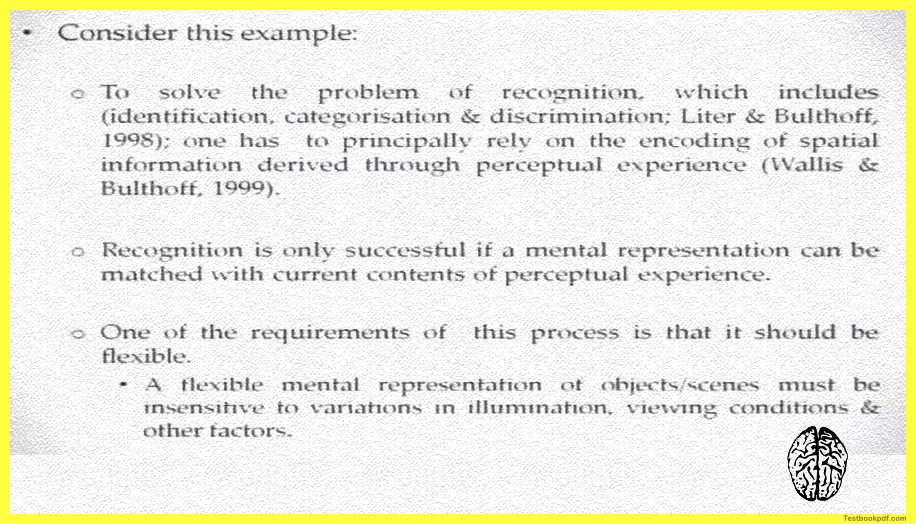
If you found a mental representation is a stimulus your mental representation should be slightly flexible I will tell you why the flexible mental representation of this object sense must be in sensitive variations in eliminations variations in viewing conditions and so many other factors so, for example, I am understanding at the particular point here there are you know few lights falling on me if I kind of move to one step right the amount of light. And the angles of the lights falling on me really change and you start seeing differently I don’t think so is it so you have a mental representation of right here which is invariant to the changes in the light if I kind of you know start facing on the right side or I start facing on the left side then also my perception which you have a lot really change so you have a representation that is stable enough.
And that is new to these kinds of changes which are having now this is a slightly sophisticated problem you know if you really give it enough thought so this is something which has in treat you know people who will be studying perception investigating perception for a long time you will have thought of serious phase how to solve these people have thought of various phase how the brain and mind release we will discuss some of this now so the thing which I was talking about.
Canonical and Non-Canonical
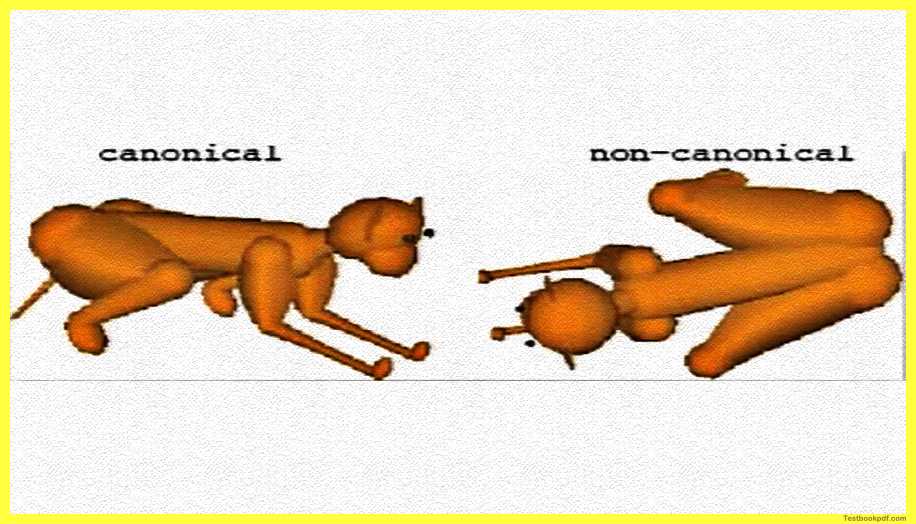
So, you know these examples you know the canonical representation which is a typical representation of things which you normally see so, for example, this is the portion of the already you see you don’t really see monkeys or any other animals directly from you know from the top you can see it from the side you can see it from front generally because we are not flying theses you know for a bird may be the one which is non-canonical to us is the more representation is it you can bicycle here again.
Again they had two different representation here one is the typical part and one is the non-typical part but we know in both cases that these are bicycles how do we know that we have representation or the mental representation or the bicycle you have to help us understands that the figure on the right is also bicycle on the left is bicycle more examples.
Bicycle Example
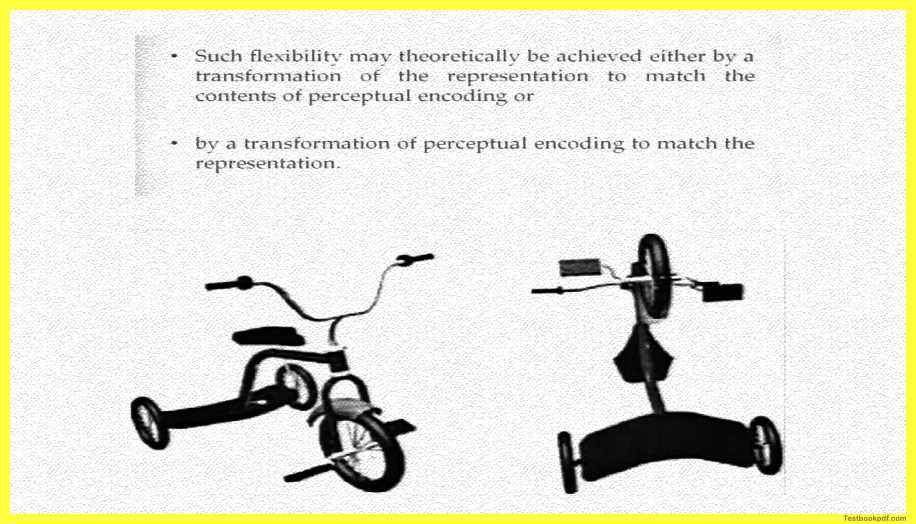
You can see that there are these three and the representation are kind of changing the light and the kind of image they fall on the if changing but we still have a good sense of what each of these objects is so this is basically the problem of representation that I actually refer to you can see the cup different shapes in size we trying of you know still have a notion that this is a cup why are we able to do that.
Now such kind of flexibility you know the kind of flexibility we just so can we theoretically achieved either by the transformation of representation to match the contents of perceptual encoding what I mean by this is I said that you might have a particular prototype of what an object looks like any variations you know encounter in the external world says for example.
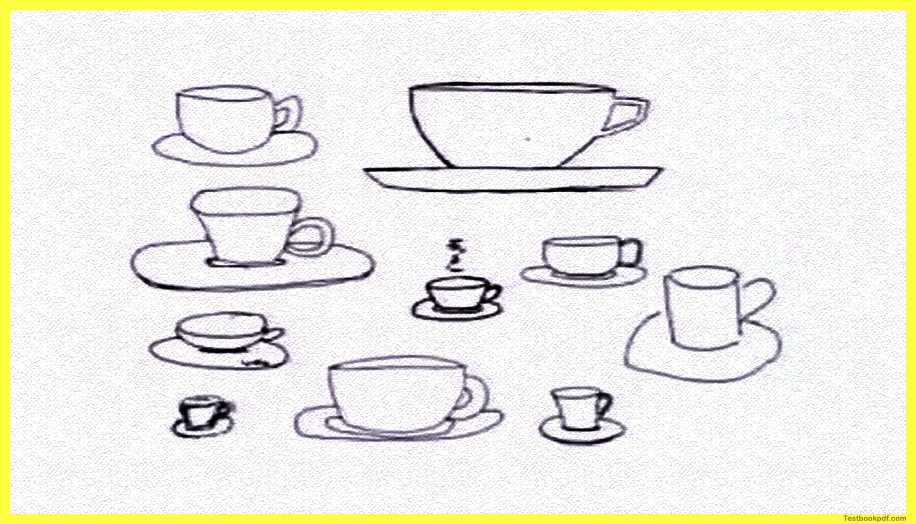
You have a particular shape like this one here or later we said we have a representation which matches one respect to cycle may be one to left is what we already having your head what you seeing outside is one to the how do you do it so what you might be doing might be adjusting incoming you know stimulus information to match what you already have.
So you match this information the cycle on the right side to the work which you already have in your head which is on your left side it kind of rotating it some chance you can transform it in some chance so that it matches if this will match the recombination will be successful if this just not match the recombination will be no success.
So this is towards have you talking of the other way this could happen is the transformation of perception encoding can be done in some way to match this representation okay so the first part is basically if you transforming the perpetual encoding the second part actually which I said earlier was the transformation of the representation to match the contents of the perception encoding.
So either you can change the representation that you have in your head now we go back to the same example we have two representations possible one is the left one is in your head and the right one is outside there are only two ways this can happen either you change the one in your head who matches outside or you change what is incoming from outside to match what has already placed only two ways this could actually match your change the rightward irrespective what is indie and what is outside okay.
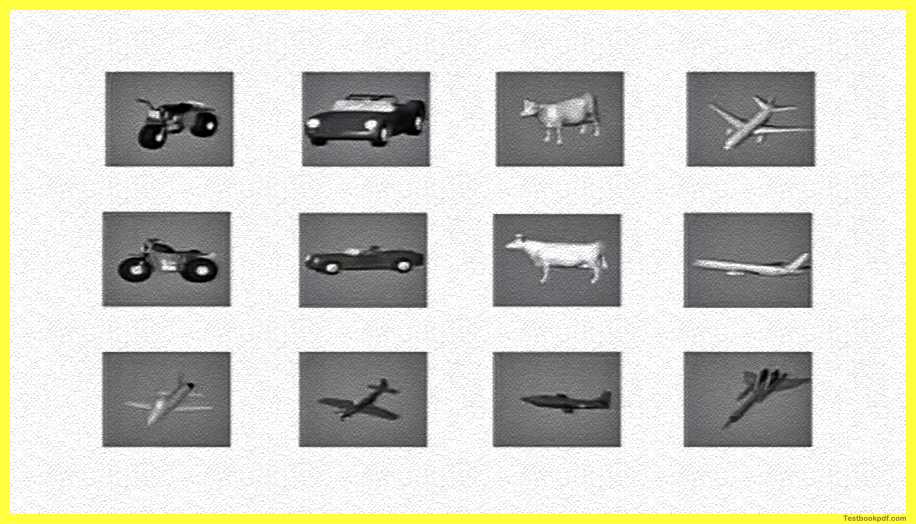
So this is what this problem.
And this is what you know needs to be done in order to really have a stable representation.
Which of the two transformations is more prominent in human recognition one might ask what are we actually doing?
There are two ways to understand but what are we actually doing are we transforming the representations in the head or are we transforming the perceptual encoding to already match a stable representation in the head two things are possible to let us see what can be done.
Now empirical philosophers like John Locke you might be heard of him in the history lectures John Locke basically try to solve the problem of representation by proposing that we have perceptions composed of simple ideas like something is Yellow it is hot it is sweet or complex ideas which is a combination of something that is both the yellow hot and sweet, this kind of way basically can lead us to assume that all knowledge is based on experience and complex entities or objects or essentially the combination of quality is derived through experience.
So you might have a sense of something that is yellow you might have a sense of something that is hot you might have a sense of something that is sweet and say for example something that is hot and yellow and sweet at the same time you might just combine these different qualities in your head.
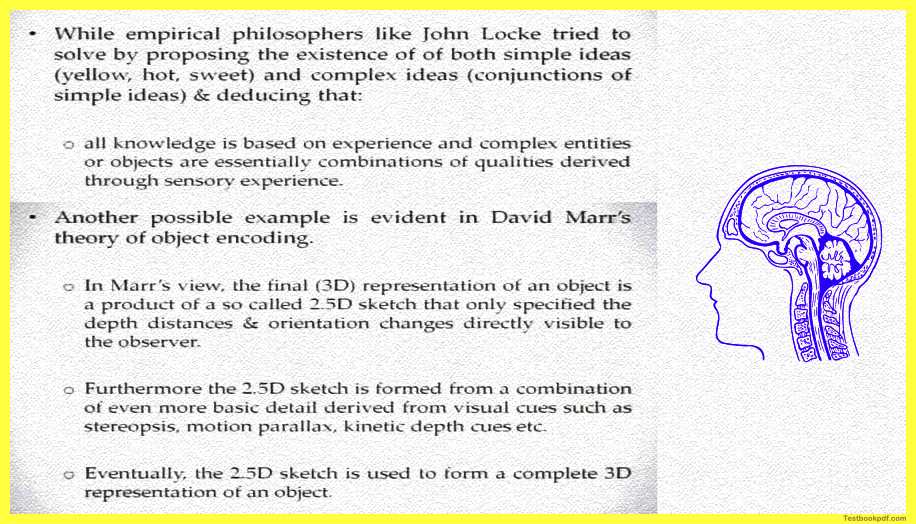
Another possible way is basically you know offered by David Marr is been working as basically given particular theory of perception he will talk about this theory of perception in more detail in a later lecture but for now, I can just tell you that in David Marr’s view the final 3D view or 3D representation of an object now what Marr said is that because they retain you know is two dimensional whatever information that we are actually getting from the outside one is basically mapped on a two-dimensional plane. But we know that the world is not two-dimensional it is three-dimensional.
It is some kind of transformation that must be done on this two-dimensional information to get this sense of three dimensions in it people are not really flat as posters are in it people have all the three dimensions but the image that is found on the right-hand is only two dimensional. So some transformation might be needed there so David Marr actually came up with the solution he said that what we actually get is something which is called a 2.5-dimensional sketch that is specified over the two-dimensional information that you get information about orientation and depth.
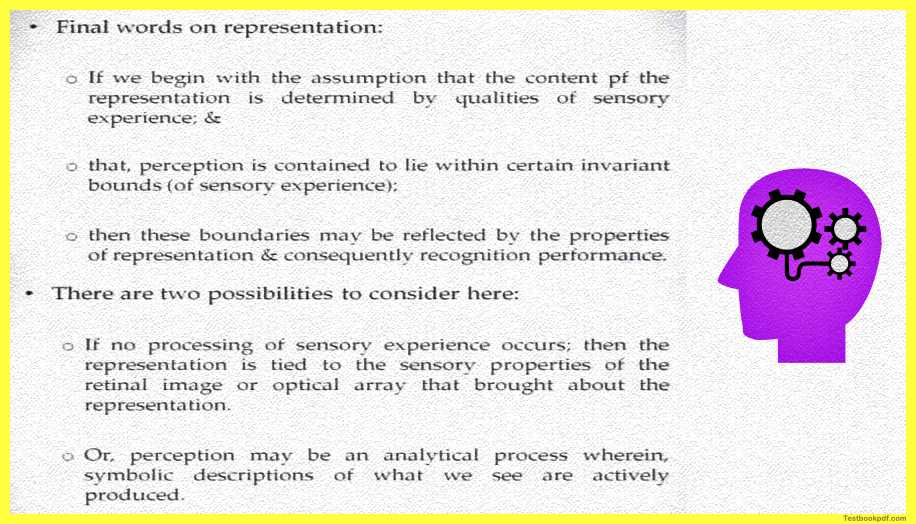
So that is why it acts 0.5D two-dimensional information you already get you to add depth in the orientation you get a 2.5-dimensional information end than that 0.5 part is the varying part that is the processing that happens on this 2.5D thing to actually overall give you a 3-dimensional representation so I am just repeating this so in Marr’s the final 3D representation of a particular object is basically a product of what is called a 2.5-dimensional sketch that only specified depth distance and orientation changes which are directly visible to any observer you can take this example say for example you know you are going in a train you show you know you saw a particular cover that is greasing in the field and the train is moving in a particular way.
When you are going further from the cover you are finding that the cover is getting smaller but you still know that it is a cover instead when you are getting closer to the cover is getting bigger so you are using that information as well so David Merr’s actually in the build we will be discussing in much more detail when you are actually talking about David Merr in one of that coming lectures but this is one of the solutions to this metal resonation you know the problem that David Merr had offered.
So you the 2.5D sketch from a combination of even more basic depth oriented whatever 2D information you getting + add visual queue such as the which as motioning that is called motion parcel can I take depth queue something is coming closer it is something that is getting bigger it is larger those kinds of this if something is moving intermittently then it is moving if something is bilking you might think that it is moving.
You know something like say what is out bilking lights appear to be moving which is basically the phenomenon that is used in LED lights so eventfully it is 2.5 d sketch it is used using these different kinds of sources of information to form what it is called a complete 3-dimensional reoperation of an object, okay so this is one solution which they Merr as offer now there could be these two kinds of phase so how do we really adjust. You know how to do it, we really come up with something more conclusive to say about representation if we began with assumption.
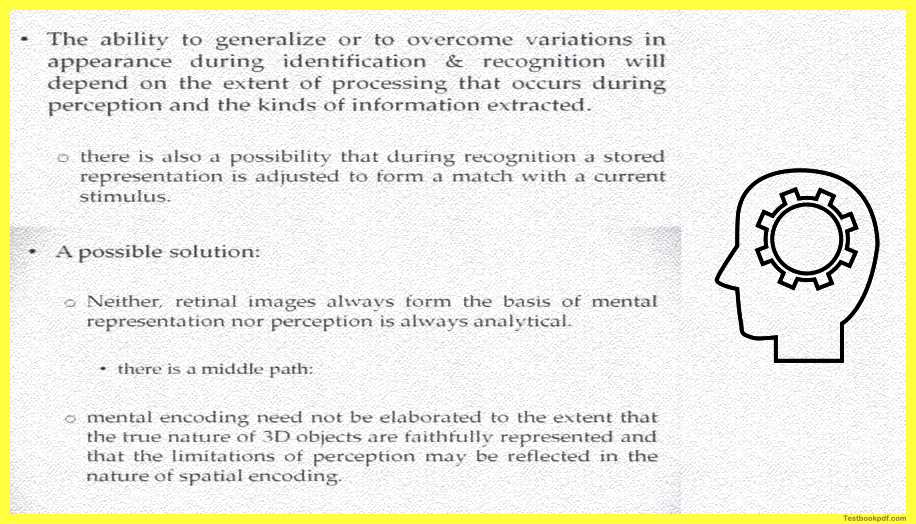
That the content of the representation is determined by the quality of sensory experience and that perception is contained to you know lie with certain engrail bound say for example you cannot perceive anything that is not being communicated through your senses insisted so those sensory experiences can give you degrees of freedom within which your entire perpetual phenomena will take place.
Then these boundaries may be reflected by the properties of the representation and consequently, effective recognition performance say for example if you are you know sensory experience gives you only particular levels of information that particular level if the information gained by a sensory experience is also the limits of how much you can transform your metal representation.
Okay moving slightly further there could be two things happening with this here if no processing of sensory and experiences is occurring you not really transforming the sensory experience that is staying as it is then what is happening is that representation is written down to the century properties of the return image or optical array again a concept is given by gifts and we will talk about that in some point and that brought about the representation so whatever information this light forming through a night. Through your retina to your you know and later generate nucleus to the bit areas is coming that is what your transformation or that is what your mental representation can actually vary up to or is there is another possibility the other possibility is that perception may be analytical.
Process okay varying we have basically symbolic descriptions of what we are actually seeing and these symbolic descriptions are actually adjusting to whatever you know the information coming from outside, this ability generalize Or to overcome variations in appearance as I said if I need was left or if I move to left or if I move to variety or if I surfacing the right or the left and this is variation in appearance during identification and combination the depends to the on the extent of processing that occurs during perception and the kind of in formations extracted, so while you just you know interacting with the first time you might be getting out the information in terms of whether you know the objectives further or closer or whatever detection of the objectives.
Those kinds of things there is also a possibility that during recognition a stood representation is adjusted to form a match with that current stimulus, so what you doing is you changing the stimulus in some same are you changing a mental representation in some sense to match the information and you know how that happens to see for example this figure.
Here we come back to that example you have representation which is to the left and you have you know the incoming stimulus which is to the right this is the extent of information that you are visual systems I getting you what will you to match this you can basically you know take this representation of the cycle which we have a head that one on the left and you will kind of trying to rotate it mentally and there are a lot of extends that I have shown that if you will do actually rotate representations.
Of objects, as they rotate and you kind of get a view which is matching the view that is being presented outside, and this matching this transformation on this mental representation will help you match these two representations and achieve successful recognition there are again these two things these two possibilities there so what can be a possible solution how do we adjust these two variable views a possible solution how do we adjust these two variable views.
A possible solution could be that neither our retinal emerges always found the basis of the mental representation so maybe our mental representation is not entirely bound by these retinal emerges. Nor perceptional is always eremitical so maybe the perception is not always analytical maybe it is also bound in some sense by the incoming sensor information so then there is a possibility of what is called a middle path what is the middle path?
The middle path is that mental encoding need not be elaborated to the extent that the true nature of 3D objects is faithfully represented. So it does not need to give you all the details about the objects that should not really be stored because then it will be slightly inflexible and the limitations of perception will be reflected in the nature of encoding so even your mental representation cannot be completely you know independent of whatever you are sensory experiences.
So this will be the middle path so you do not really you know from the sensory experience part over specify and from the mental representation part you cannot go independent of verges incident space so you kind of make an adjustment or compromise between the two labors that was about representation now you will basically see the kind of discussion we have had today is going to be the base of many theories of object recognition many theories of how visual perception takes place and then we will actually talk about this question in much more detail I talk to you about this vertical equation so that kind of primes you to what is going to come next.
This should basically be the baseline in order to understand theories of perception line the once given by Gibson and David Marr and the Gestalt psychologist and also to understand theories of object recognition like the temperate matching theory and the cognition by components model which all we will be talking about in a later lecture.
So to summarize today’s debit we talked about what the notion of representation is in cognition and in basic perception in the more specific sense we talked about how these representations can be built up whether they are built using sensory processes or whether they are built through analytical processes where our brain is working on those sensory inputs and it is trying in transforming them.
We discussed basically that either of the approaches you know an extreme you know of either with two processes might not be the best way out and so a compromise might be there and there should be a middle path where your kind of under specify the sensory experience part and you kind of restrict you know the sense of how analytical the perception process will be with respect to whatever visual input we are getting in. We will talk about this in much more detail in the coming lectures this was all about representation in perception. Thank you.
Read also:
Signal Detection Theory Psychology Pdf
Physiology of Visual Perception pdf (vision perception)
Click here for Complete Psychology Teaching Study Material in Hindi – Lets Learn Squad
